Contents
- What basil can be prepared for the winter at home
- Rules for the collection and preparation of basil
- Choosing a storage location
- The main rules for storing basil in winter
- The best recipes for basil blanks for the winter
- How long can basil blanks be stored (terms and conditions of storage)
- How to prepare basil for the winter to preserve vitamins and smell
This fragrant herb is often used in oriental cuisine, but in ordinary fresh vegetable salads, it can set the tone for the whole taste. To create a summer mood in the cold season, just add a few leaves of basil to food, while providing the body with an additional portion of vitamins. Many housewives prepare basil for the winter. This can be done in different ways. Below are the simplest and most popular recipes for harvesting this plant.
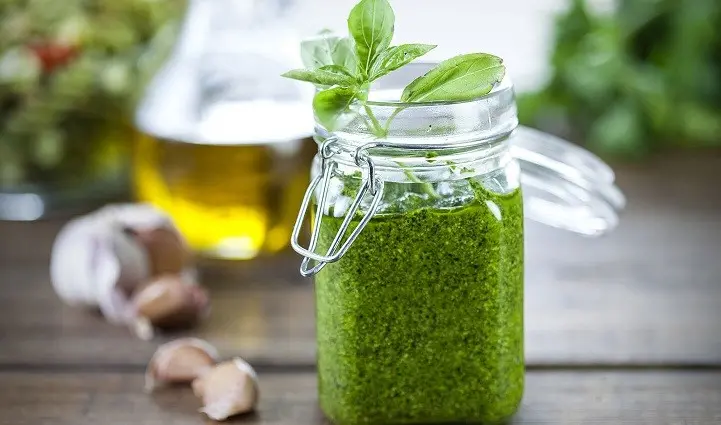
What basil can be prepared for the winter at home
Basil belongs to the Lamiaceae family. This annual plant is loved by culinary experts all over the world, because its spicy aroma can give a bright taste to the most insipid dish. Most often, purple varieties of basil are harvested for future use, such as Ararat, Pepper, Opal, Vanilla and others.
Due to the fact that basil, both purple and green, contains a lot of essential oil containing camphor, as well as vitamins A, PP and C, this spicy herb is useful not only as a seasoning, but also as a medicinal plant with antimicrobial, astringent and disinfectant properties. So people who know its healing qualities also try to harvest basil leaves for the winter.
Rules for the collection and preparation of basil
Today, in order to supply yourself with useful greenery, it is not at all necessary to be the owner of several acres of land. So many home gardeners grow basil on balconies and window sills. To make preparations of this plant for the winter, you can use both leaves and branches. The first are collected before flowering, since it is during this period that they contain the maximum amount of essential oil, vitamins, carotene, phytoncides and other useful substances.
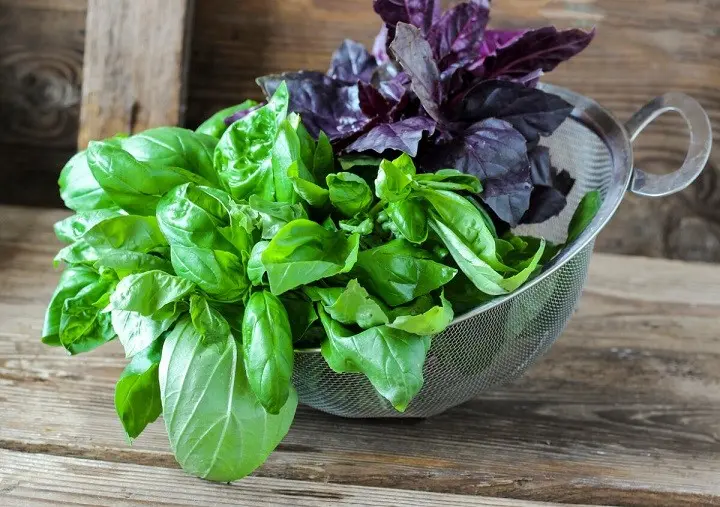
Most healers and culinary experts prefer purple varieties of basil, as they contain several times more essential oils, but the green look of the plant is also beneficial and has a milder aroma.
Experienced summer residents grow 2-3 crops of basil, and for the first time they collect leaves when the plant reaches a height of 15-20 cm. At the same time, you do not need to pluck all the leaves: if you leave 3-4 pieces on the main stem, the plant will again begin to gain green mass . When harvesting the first crop, you should cut off not only the leaves, but also the upper shoots, which will stimulate the plant to launch new side branches.
But when re-collecting foliage, the tops of the shoots must be left so that the basil can form inflorescences. The time of day when harvesting does not matter, as long as the weather is dry.
Important: you can not collect the leaves of the plant immediately after the rain, as there is a risk that they will get wet.
Before deciding how to prepare basil for the winter, it is worth preparing it for processing. To do this, rinse the greens in warm water, remove debris, rotten leaves and twigs, then leave it to dry from moisture on a paper towel.
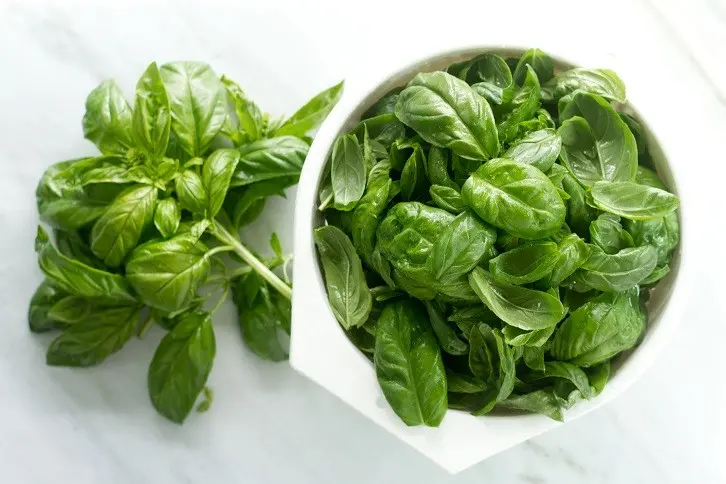
Choosing a storage location
Depending on where the basil will be stored in the future, the method of harvesting it for the winter is chosen. So, if he is given a place on a shelf in a sideboard, then it is better to subject his leaves to drying, and if in the refrigerator, then he can be frozen.
At room temperature
So you can store only dried herbs. To save space on the shelf in the sideboard, only the basil leaves should be dried, which are then placed in a jar or canvas bag. Most often, this is how this plant is harvested for use in cooking.
If the dried bundles of the plant are to be stored, then they must be formed from 6-7 branches, bandaging them at the base. This is how raw materials are harvested for their further use for medicinal or cosmetic purposes.
In both ways of storing basil at room temperature, it must be properly dried.
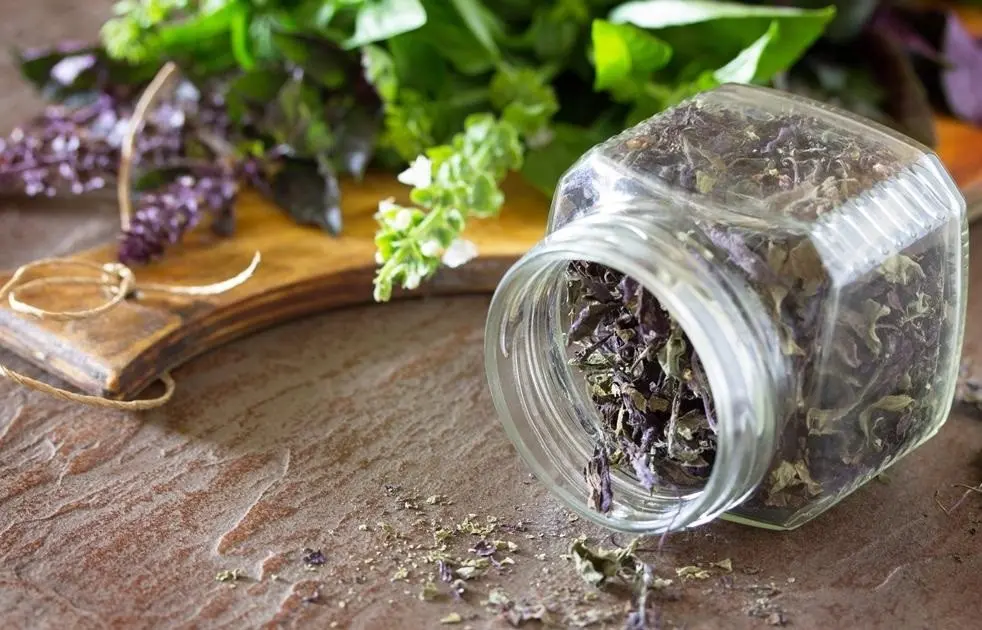
In a refrigerator
Basil can be stored fresh in the refrigerator in a jar of water for up to 1 week, but if you need to stock up for the winter, it’s best to freeze the leaves.
There is another way to keep this plant fresh in the refrigerator. To do this, prepare the basil leaves by washing and chopping them with a knife. The finished raw material is placed in a jar, lightly salted and poured with olive oil. In this way, the basil not only retains its beneficial properties, but “shares” the aroma with the oil, which can be used to dress salads or other dishes. The prepared filling is stored in the refrigerator for several months.

In the vegetable compartment
This method of storing greens is popular with housewives. Basil leaves should be washed, dried, and then placed either in a plastic bag or in a container with a lid. In the first case, you need to squeeze the air out of the bag as much as possible, and then tie it up and place it in the vegetable compartment.
In the second case, the basil leaves should be tightly packed in a container and closed with a lid. Since the temperature in the vegetable compartment is always the same and does not exceed +2 ° C, the greens, including basil, last up to 1 month, but it is important to periodically check its condition.

In the freezer
Frozen basil leaves can be stored for up to 2 years, but it should be remembered that with this method of preparation, its beneficial properties are partially lost, although the aroma and taste are preserved. It is best to freeze purple basil leaves, as they are more resistant to cold exposure.
Some housewives prefer to freeze whole branches of the plant by washing, drying and placing them in a bag, but it should be remembered that tearing off the leaves from them will be problematic, and re-freezing further reduces the beneficial properties of basil.

The main rules for storing basil in winter
To preserve this greenery and its beneficial properties in winter, you need to follow a number of rules:
- Before subjecting the basil to processing, it is necessary to carefully check the raw materials for the presence of debris, rotten or yellowed leaves. If they are not removed, then over time the entire supply of spices will be spoiled.
- Basil leaves have a lot of moisture, so drying them must be very thorough. If they are to be stored in the refrigerator, then they must be dried naturally by placing them on a paper towel, but out of reach of sunlight. Only after such a procedure can greens be placed in bags or containers with lids for further storage in the refrigerator.
- Periodically, you need to check the condition of the workpiece, especially stored in the vegetable compartment. If the refrigerator needs to be defrosted from time to time, then the product should be taken out to the balcony during the cold season so that it does not melt.
Important: if basil is to be frozen, then the greens should not be washed beforehand, but just let it dry slightly in a natural way.
The best recipes for basil blanks for the winter
It is best to store this herb dried or frozen, but there are other ways to preserve its properties for cooking or healing decoctions. Below are the best options for harvesting this spice for the winter.
Bundle or sheet drying
To preserve all the beneficial properties of greenery, it should be dried. Both bunches of basil and its leaves are suitable for this.
Important: so that essential oils do not evaporate during drying, the process should take place in a well-ventilated area away from sunlight. If only the leaves are dried, then they need to be laid out in a thin layer on a natural fabric or newspaper, covered so that dust does not settle on them. If the bunches of basil are to be dried, then they can be pre-washed and wrapped in a newspaper, and then hung on a balcony or an open window.
The plant is considered ready for further storage in a jar or linen bag at room temperature if its leaves are easily ground into powder with your fingers.

You can speed up the drying process by using an oven or an electric dryer. In the first case, it is important not to overdry the plant, because in this case it will lose most of its beneficial properties. To prevent this from happening, you need:
- Preheat oven to 40°C.
- Spread a thin layer of basil leaves on a baking sheet.
- Put the baking sheet in the oven and leave for 2 hours with the door slightly ajar.
- After this time, turn off the oven and leave the basil in it for several hours so that the leaves cool completely.
Important: in the process, turn the basil leaves several times so that they dry evenly.
To properly dry basil in an electric dryer, you need:
- Spread the leaves on a pallet in a thin layer.
- Turn on the device by setting the temperature to +50 °C.
- In order for the leaves to dry evenly, they should be checked and, if necessary, turned over.
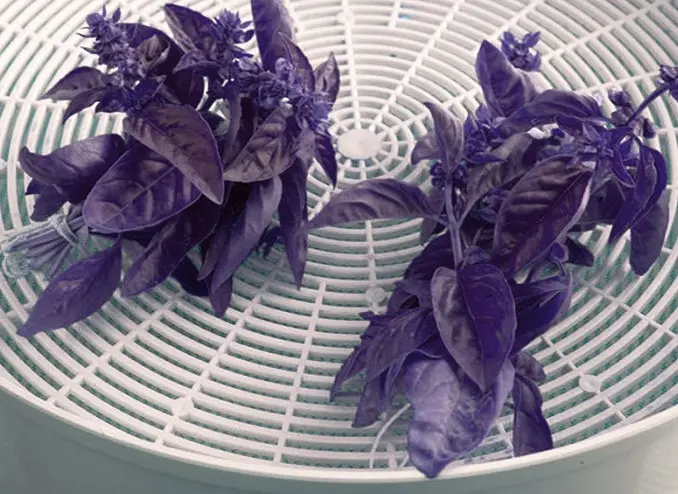
Drying time is 4 hours.
You can speed up the process by using a microwave. It is enough to lay out a thin layer of basil leaves on a plate, turn on the device for 3,5 minutes. at a power of 700 W, and the product is ready.
Freezing
This is the best way to store fresh basil. There are several ways to freeze the leaves of a plant, preserving its beneficial properties as much as possible.
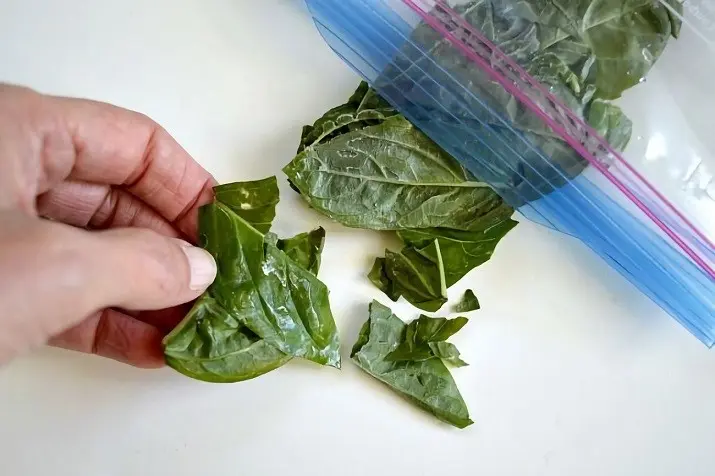
fresh basil
This method requires fresh leaves of the plant. Need:
- Tear off the leaves from the stem.
- Wash them and dry them completely.
- Rub each leaf with olive oil.
- Fold in portions into small packages and send to the freezer for storage.
Important: you should immediately prepare portions that can be used at a time so as not to re-freeze the basil leaves. Also, for these purposes, it is better to use bags with fixation in order to remove all the air from them, if possible. So basil leaves will not only retain their spicy aroma and taste, but also color.
So the greens can be stored up to 2 years without loss of useful properties. It is suitable for making sauces, soups and meat dishes.
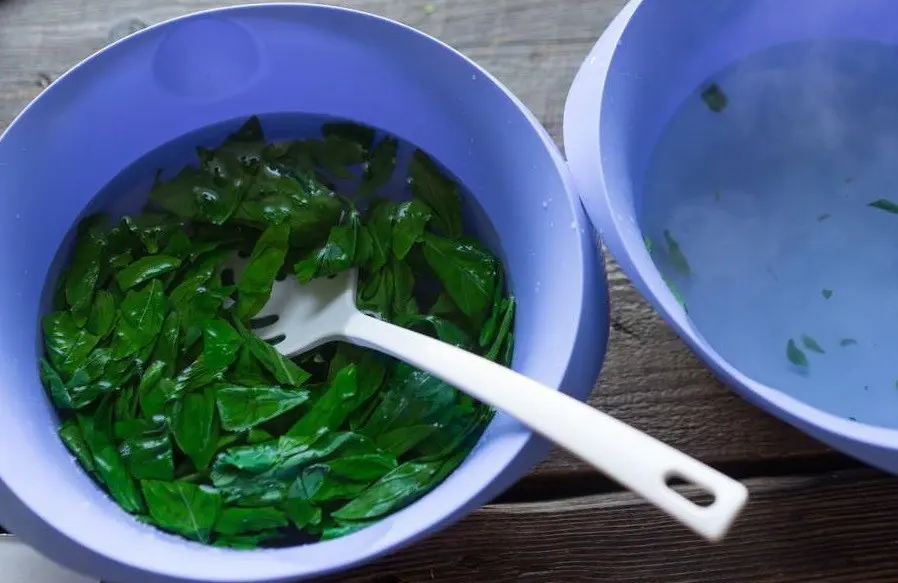
blanched basil
To prevent the leaves of the plant from losing their purple color, they should be blanched before freezing. Enough for 3 sec. put them in boiling water, take them out and let them cool down. Then they are laid out in bags and sent to freeze in the refrigerator.
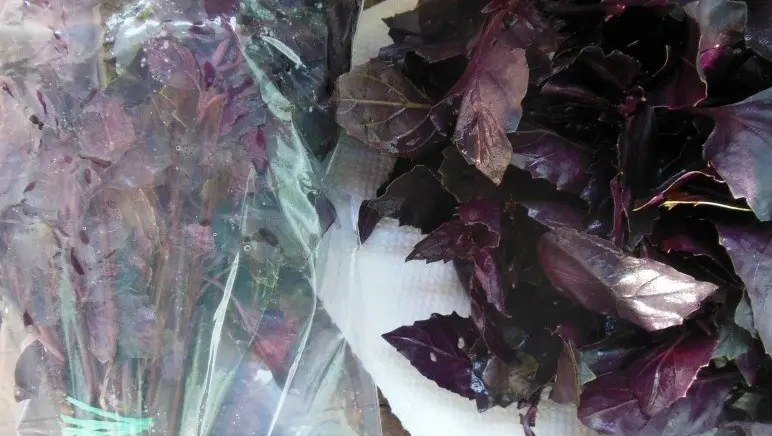
In ice cubes
This is another way to make greenery harvesting for the winter:
- Rinse basil leaves.
- Scald them with boiling water.
- Allow to cool and tear into pieces or whole, if they are small, put into ice molds.
- Fill with purified water and put in the freezer to freeze.
Important: to save space in the freezer, ice cubes with basil leaves should be removed from molds and transferred to bags.
As a rule, spice leaves harvested in this way are used to prepare hot dishes – soups, dressings and others.

Basil pickling
This is another way to harvest basil. In salted form, it can be stored for up to a year in the refrigerator in an unrolled form and an unlimited amount of time if it is rolled up. It is believed that this is the best way to preserve the beneficial substances of the plant while fully preserving its taste, color and aroma.
For salting you need:
- Prepare containers by sterilizing them with lids in hot water.
- Take 400 g of washed and dried basil leaves and 200 g of salt.
- Spread the leaves in a jar or container in layers, sprinkling each with a small amount of salt.
- Close the jars with lids and store in the refrigerator.

Important: when cooking, salted basil must either be washed to remove excess salt or placed in a dish before it is salted. Usually, it is enough to add a few of these leaves to give the food flavor and saltiness.
Pickled basil
The leaves of this plant can be preserved both separately and with tomatoes. In the first case you need:
- Washed leaves (100 g) pour for 1 min. boiling water.
- Drain the water, squeeze them lightly and grind them with a blender or through a meat grinder.
- Add salt (50 g) and olive oil and mix well.
- Put the basil mixture in a jar and sterilize.
- Close the product with a lid and after cooling, store in the refrigerator.
Important: To keep canned basil longer, pour hot olive oil almost to the rim of the jar before closing it with a lid.
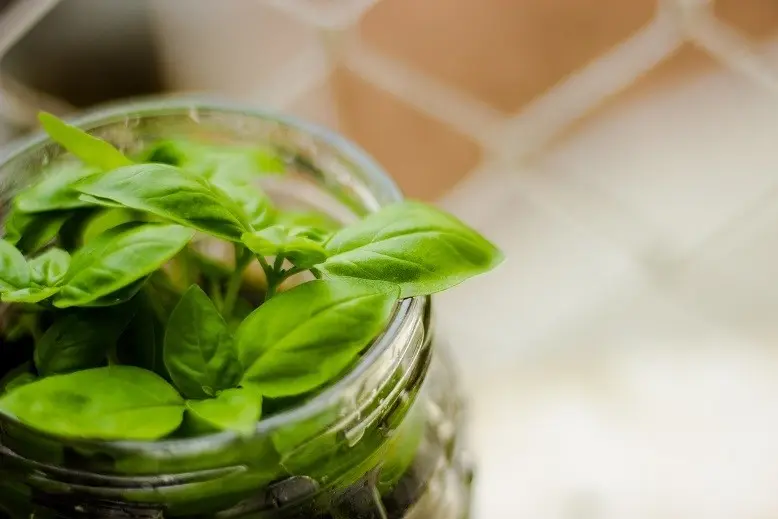
Basil also retains its properties well when marinated with tomatoes. For this you need:
- Lay prepared tomatoes in layers in jars, alternating them with basil.
- Prepare a marinade from 2 liters of water, 200 g of sugar, 100 salt and 100 ml of apple cider vinegar.
- Pour the hot marinade into a jar, leave for a few minutes, and then drain.
- Bring it to a boil and pour it back into the jar, after which it must be immediately closed with a lid.
When opening pickled tomatoes in winter, basil leaves can be removed and put into a bag, sent for storage in the refrigerator. In this form, they can be stored for a month.
basil syrup
For its preparation, you can take both spicy varieties of green and purple basil, for example, with a clove or tree aroma.
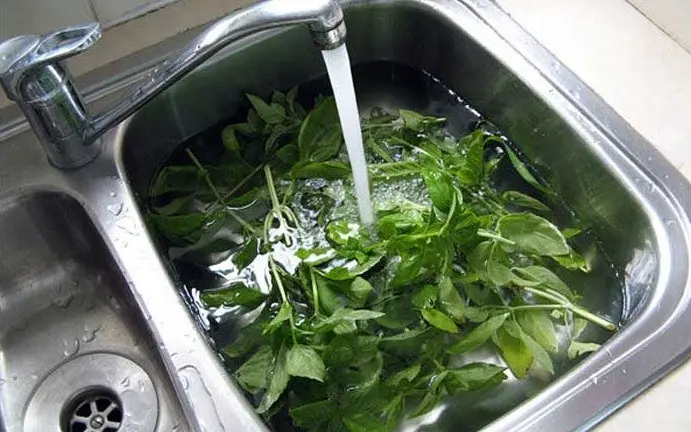
To make green basil syrup:
- Prepare 200 g of leaves by washing and drying them slightly.
- Prepare a syrup from 0,5 liters of water, juice and crushed zest of one lemon, 1,1 kg of sugar.
- When the sugar is almost dissolved, you need to add basil leaves to the syrup and simmer for 25 minutes over low heat.
- The syrup must be cooled and filtered, then brought to a boil again and, after boiling for another 4 minutes, pour into pre-sterilized jars.
Syrup from purple plant varieties is prepared somewhat differently:
- Basil leaves (150 g) need to be kneaded with 2 tbsp. l. citric acid until they release juice.
- Add to them 1 tbsp. sugar and grind again.
- Leave the resulting mixture overnight in the refrigerator.
- Prepare syrup from 1,3 kg of sugar and 2 liters of water.
- Add the basil mass from the refrigerator to it and boil for 20 minutes.
- Allow the syrup to cool completely, then strain and again put on a small fire for 40 minutes.
- Pour the finished product into sterilized jars and twist.
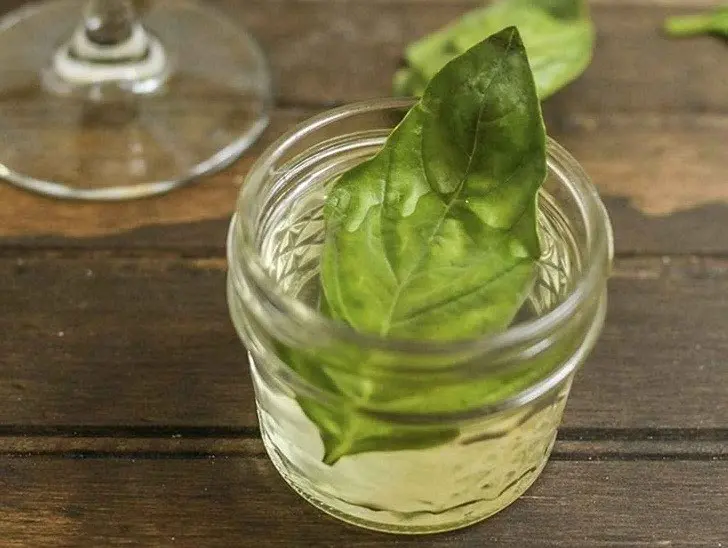
Both types of syrup are good for the body, and they can be used as an additional source of vitamins by adding to tea, or as a flavoring and sweetener for baking.
Basil Paste
Pasta is another way to harvest greens for the winter. To make it from basil, you need:
- Wash the leaves and dry.
- Grind with a blender or through a meat grinder.
- Salt and stir the mixture.
- Pour in olive oil and mix well again.
- Pack in sterilized jars, cork and send to the refrigerator for storage.

Important: this paste can also be frozen by distributing it into ice molds or small glasses. After complete freezing, the pieces of pasta are poured into bags and stored in the freezer.
Basil compote
It is not difficult to make compote from this plant. To get a 3-liter can of a delicious drink, you need:
- Prepare purple basil sprigs by washing and removing wilted leaves.
- In sterilized jars, put basil (150 g) on the bottom, add sugar (300 g), citric acid (5 g) and pour all 3 liters of boiling water.
- Roll up the jar with a lid, turn it on its side or gently shake it so that the sugar is completely dissolved.
Turn the finished product over, wrap it in a blanket and leave to cool completely.

basil oil
To prepare it, you need:
- Chop basil leaves and sprigs.
- Put them in a dense layer in a jar.
- Fill to the top with vegetable oil, close the lid and place in a dark place to infuse at room temperature.
- After 1-2 days, the oil must be filtered, the finished product should be stored in a hermetically sealed container.
You can use basil oil as a salad dressing.
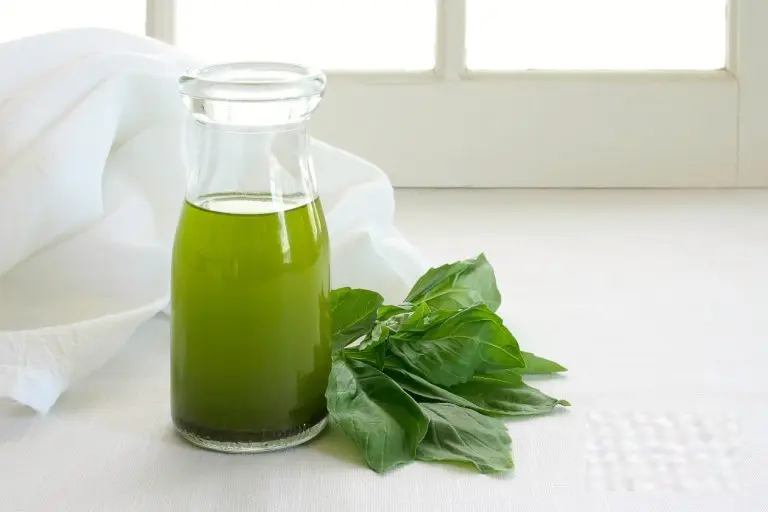
Basil Sauce
This dish, popular with chefs, can be prepared at home. There are many recipes for basil sauces, but the most popular ones are listed below.
Pesto
This sauce is perhaps the most popular not only in its homeland in Italy, but throughout the world. Since in the classic recipe it contains sheep cheese, this ingredient is excluded when preparing a blank for the winter. Parmesan can be added before serving the sauce. To prepare the latter, you need:
- Wash and dry any kind of green basil (large bunch).
- Grind it with a knife, but better with a blender.
- Add a large clove of garlic and pine nuts (30 g) to the basil.
- Grind again.
- Add to the mixture lemon juice (10 ml) and 75 ml of olive oil (gradually topping up).
- Salt and pepper to taste, and then beat again well.
- Pack the sauce in sterilized small jars, pour in olive oil and close with lids.
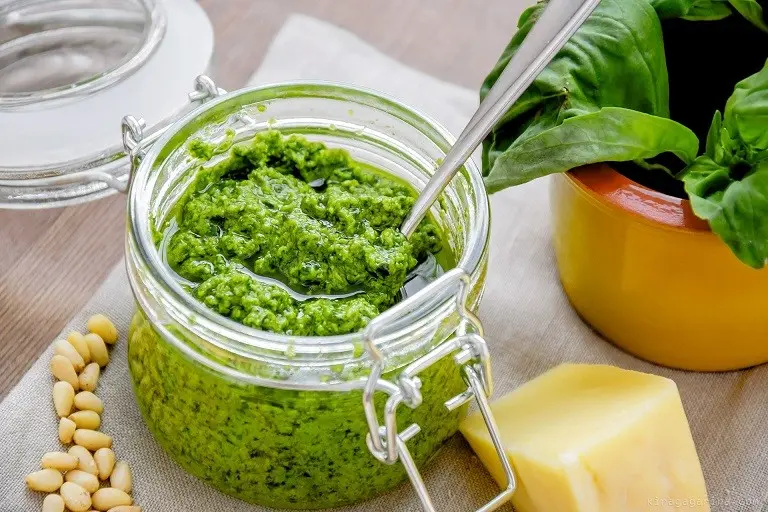
Store the finished product in the refrigerator. Before serving, grate the Parmesan into it and mix.
Sugo sauce
This is another famous Italian basil sauce that can be prepared for the future for the winter. For this you need:
- Wash and peel 25 medium tomatoes.
- Stew them on low heat for 25 minutes without covering the pan with a lid.
- Wrap a large bunch of purple basil in cheesecloth and place in the pot with the tomatoes.
- Stew for 40 minutes.
- Remove gauze bag with basil from the pan, squeeze into tomato sauce.
- Add salt (1 tsp) and sugar (3 tbsp) to the last one, mix well.
- Pour the finished sauce into sterilized jars and roll them up.
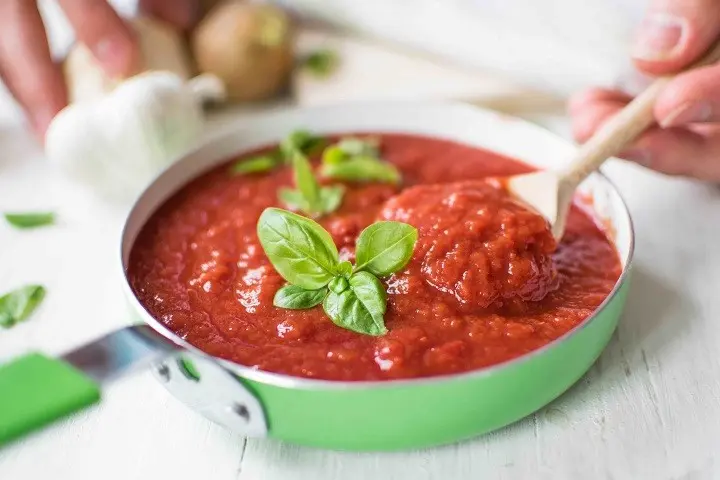
In winter, tomato sugo sauce with basil is served with pasta or stewed vegetables.
In oil with garlic
To prepare basil according to this recipe, you need:
- Chop a large bunch of greens.
- Putting the basil in a jar, sprinkle the layers with sea salt and crushed garlic.
- Pour sunflower oil into a full jar with basil packed in it and close the lid.
- Keep refrigerated.
Use the finished product by adding it to ketchup or tomato sauce with potatoes or pasta.
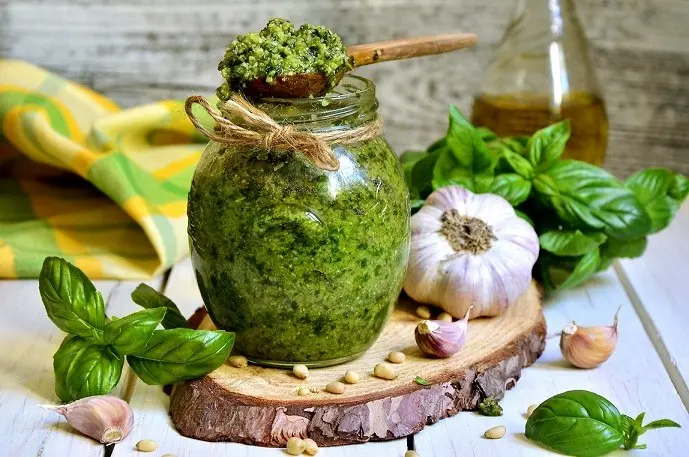
Basil seasoning
There are many seasoning recipes with basil, but for the winter it is most often prepared with nuts. For this you need:
- Basil (150 g) washed and dried.
- Garlic (10 cloves) peeled.
- Peel walnuts (15 pcs.).
- Mix all ingredients in a blender until a paste forms.
- Add salt (1 tsp) and olive oil (6 tbsp), mix.
- Transfer to sterilized jars and close with lids.
Store the finished product in the refrigerator.

Glass jar of pesto sauce on white kitchen table closeup
Harvesting basil flowers
Healing decoctions and fragrant tea are prepared from them in winter. To dry basil flowers, you need to pick them as soon as they have blossomed, it is at this time that they are most fragrant. Arrange the flowers on a newspaper or tray in a ventilated area and leave to dry completely. Transfer the finished raw materials to jars, close with lids and store in a dark and dry place.
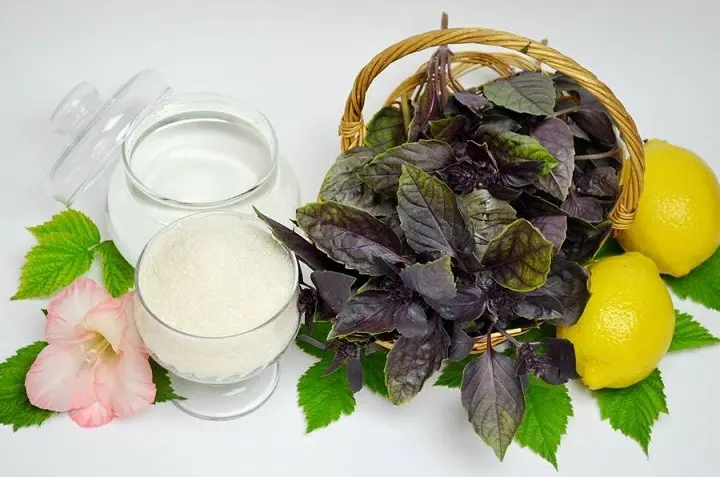
Adjika with basil
To keep the finished product as long as possible, many housewives freeze portions of adjika with basil in the freezer. If necessary, just take it out in advance and defrost to get a fresh hot sauce. For this you need:
- Wash, peel and cut tomatoes (1 kg).
- Wash, peel and cut into strips bell pepper (1 kg).
- Peel the garlic (3 heads), de-seed and chop the chili peppers (4-6 pcs.).
- Pass vegetables through a meat grinder or chop with a blender.
- Add salt (1 tablespoon) and sugar (1 teaspoon).
- Wash a large bunch of basil, separate and chop the leaves.
- Add greens to adjika.
- Mix the mixture and pack in freezer containers.
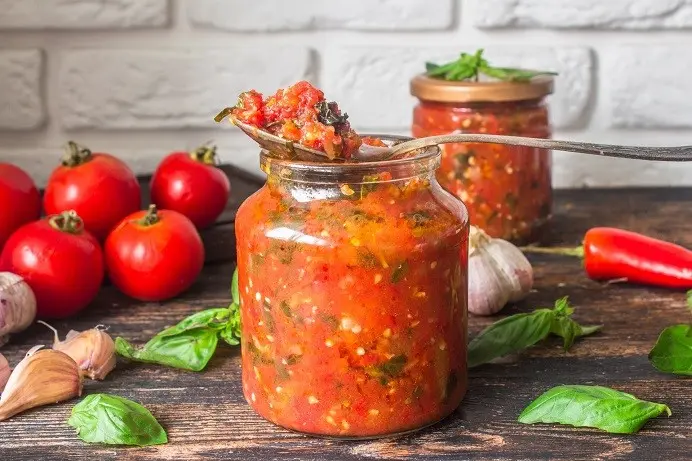
Adjika prepared in this way can be stored for a very long time, while remaining fresh and tasty.
How long can basil blanks be stored (terms and conditions of storage)
The shelf life of basil depends on how it is harvested:
- Frozen, it can be stored for up to 2 years.
- Dried leaves or bunches – up to 1 year.
- Pickled basil in jars – up to 1 year.
- Salted and stored in a container in the refrigerator – up to 4 months.
How to prepare basil for the winter to preserve vitamins and smell
The best way is to freeze basil leaves. Since this process is quite fast, all the nutritional and beneficial properties of the product are preserved, but it cannot be re-frozen. That is why it is worthwhile to determine in advance what portions of basil will be, because in this form they can be stored for up to 2 years.









